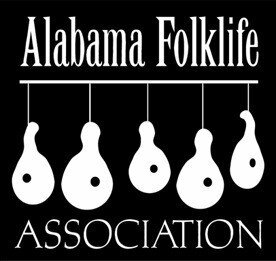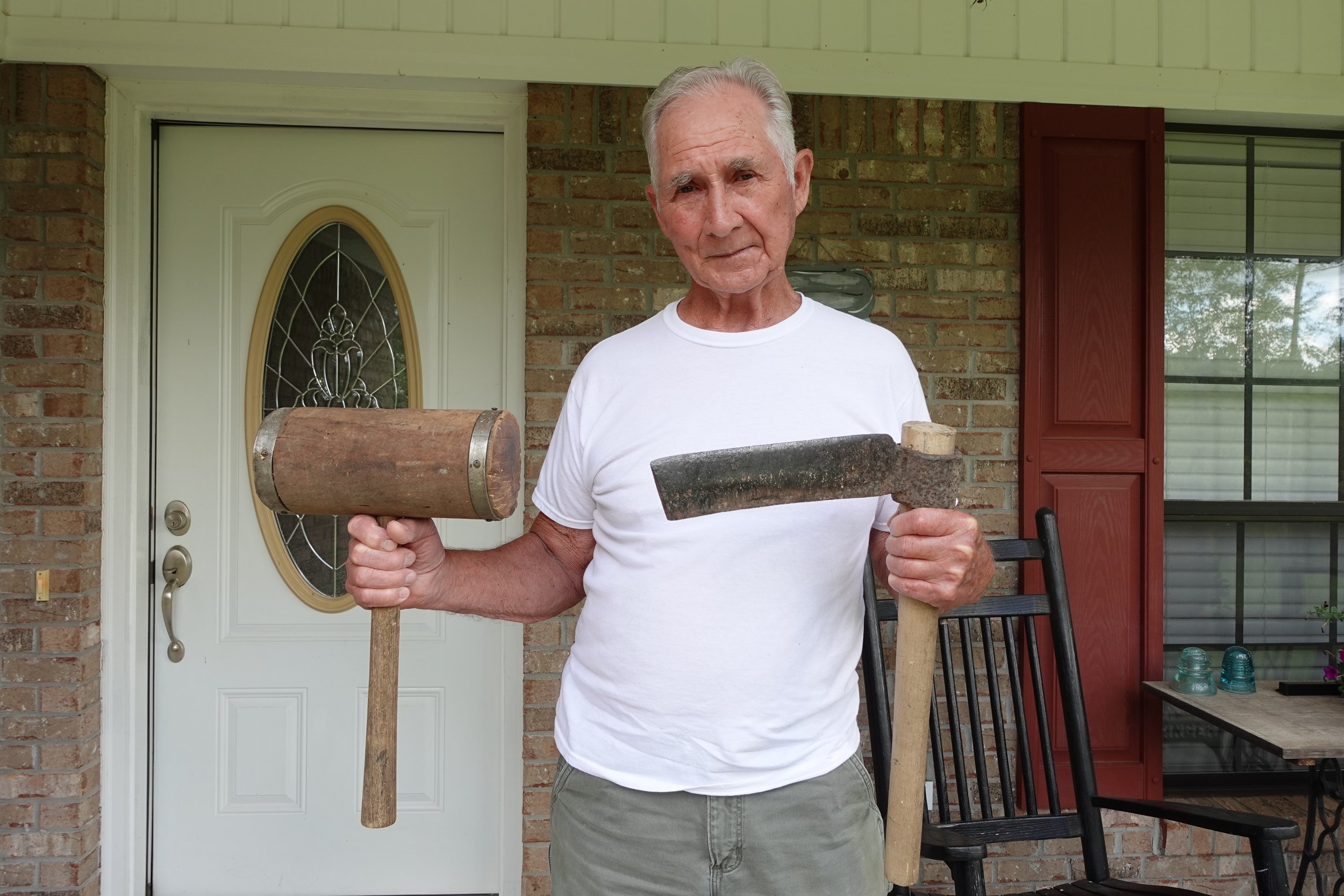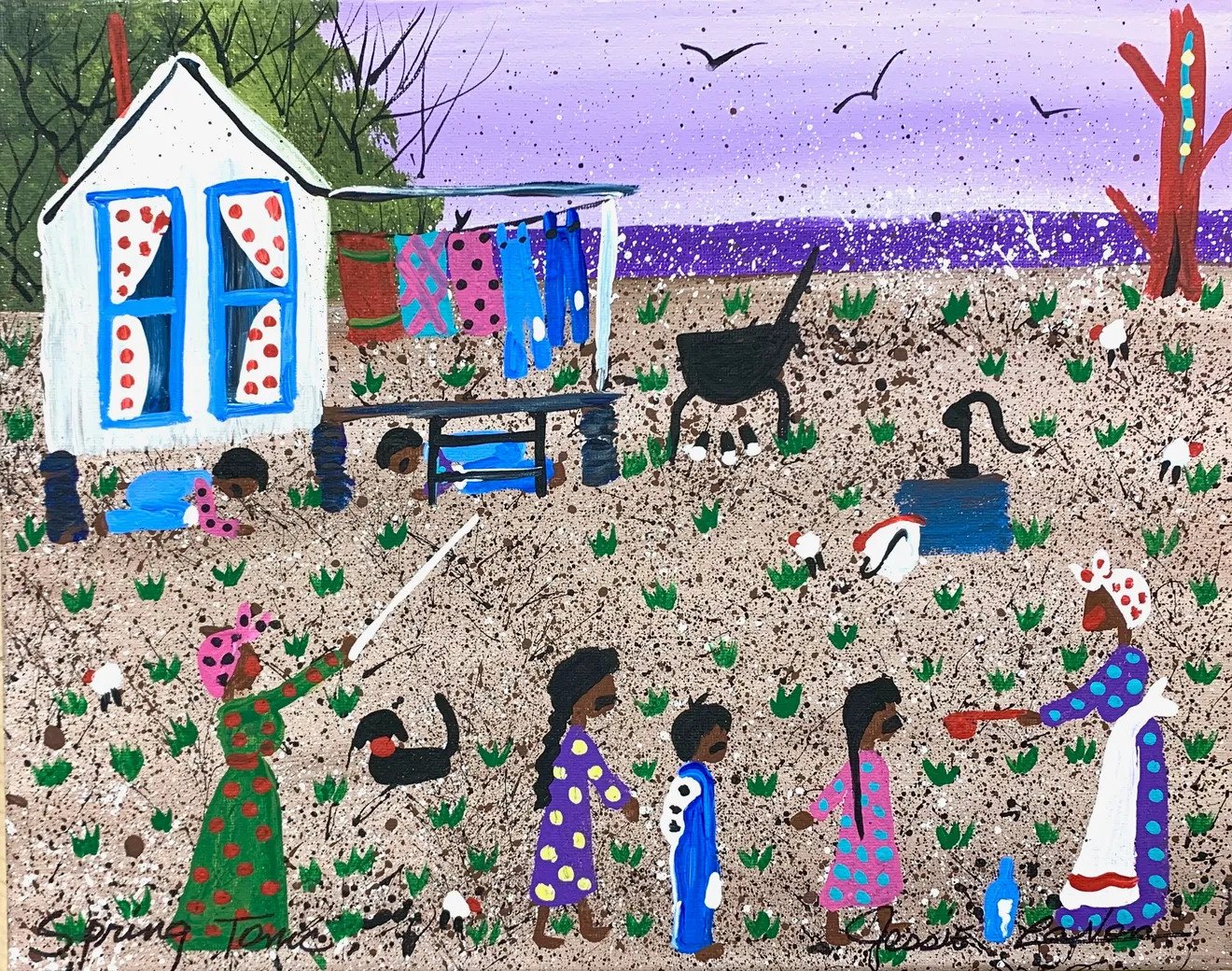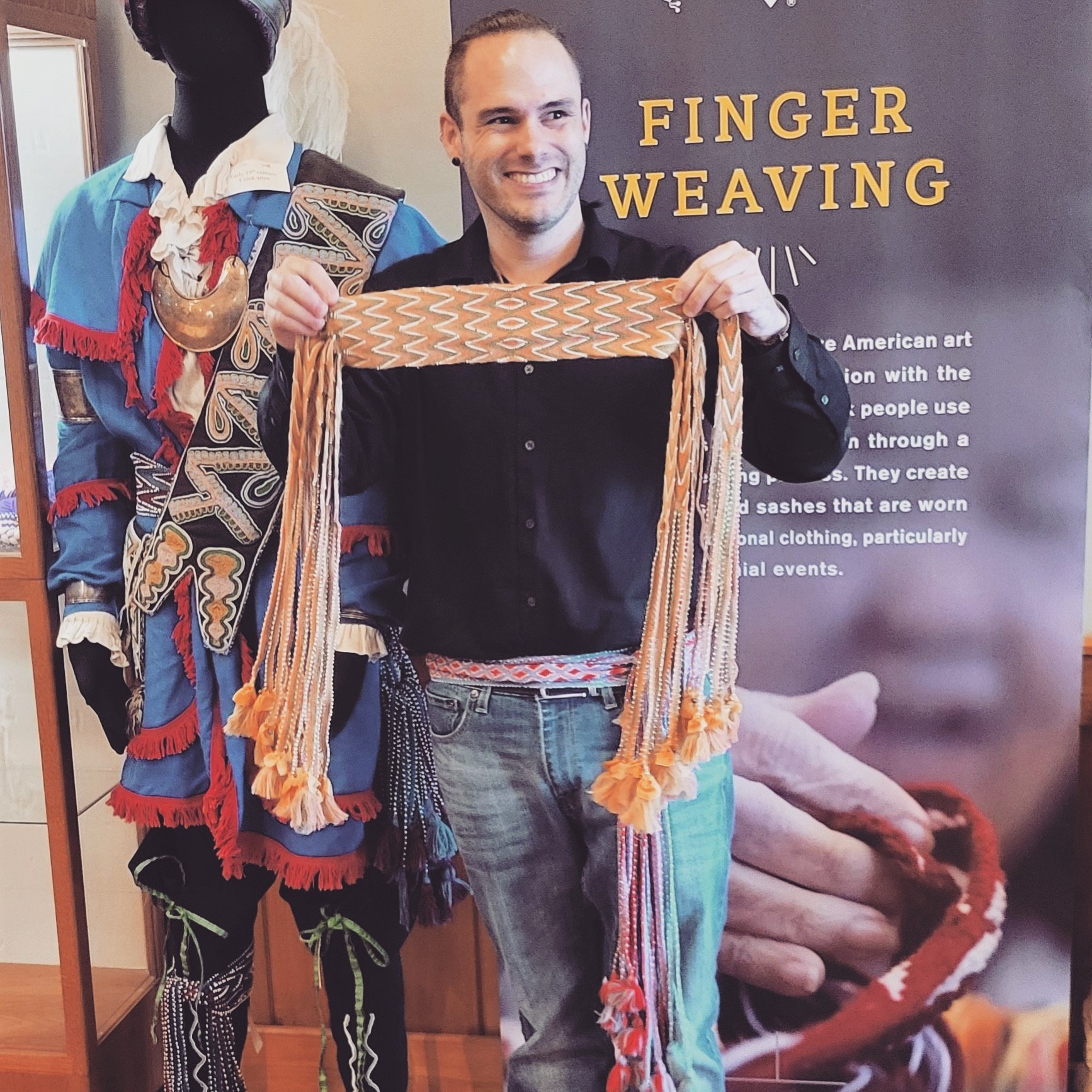In the Alabama Folk podcast, we go deep with artists and makers who carry on traditions passed down through the generations. Through their lives, we discover the many histories, cultures, communities, and landscapes that make us Alabama folk.
Catch all 18 episodes on Apple, Spotify, or wherever you stream, or listen online below!
SEASON 3 (2024)
1. My Brooms Are Me: A Fourth Generation Broommaker in the Shoals
George Jones Jr. carries on his great grandfather’s broommaking tradition on family land: growing and harvesting broomcorn, hunting sticks, hand tying, and winding brooms on 19th century equipment. Over three decades, George has evolved in his craft: blending conventional and new elements, realizing broommaking as an art, and relying on it in difficult times.
2. Under the Lion: Vietnamese Lion Dance in Bayou La Batre
Charlie Tran has led Beast of the Bayou, a lion dance crew in Bayou La Batre, since age 17. He illumines lion dance history, its place at the center of Vietnamese New Year, Buddhist roots, and its many elements: blessing and community, materials and movement, drumbeat, red envelope, and the Buddha. He also reflects on recruiting and growing dancers, and the future of his hometown.
3. Red Eggs and Braided Bread: Growing up Greek in Montgomery
Sandra Polizos was raised in a tight-knit Greek community where the Greek Orthodox Church sat at the hub of religious, cultural, and community life. She explains the symbolism and experience of Greek Orthodox Easter, in particular its foodways, and reflects on how having Greek grandparents, schooling, language, fasting practices, and cooking skills shaped who she is today.
4. To Welcome the Day: Making Rangoli in Florence
Amita Bhakta shares the art of rangoli from her native India with her community in Florence. Rangoli uses colorful sand patterns to express welcome, blessing, beauty, and joy, and is present in festivals across India, especially Diwali. Amita describes its Hindu roots, symbolic elements, and ephemeral nature. And she reflects on creativity, making, slowing down, and letting go.
5. A Costume Wearing a Person: Designing Mardi Gras in Alabama
Jay Herring and Doug Baloy designed and built elaborate runway costumes for Mardi Gras balls in Alabama for over twenty years. Each one-of-a-kind piece grew from creativity, ingenuity, and thinking big, and came to life with their combined skills in costume and set design. Jay and Doug reflect on the artistic process, freedom of expression, the LGBTQ community, and the magic of Mardi Gras.
6. Sew Their Names: Quilting Remembrance and Reconciliation in Lowndes County
Descended from slaveowners and from enslaved people, Judge Susan Walker and Reverend Dale Braxton walked very different paths to Hopewell Baptist Church. Yet through their willingness to trust each other and tell the truth about the past, the two built a quilting project to honor enslaved people that brings Alabamians together to remember, grieve, sing, heal, and build something new.
SEASON TWO (2023)
1. There’s No Band Like It: The Excelsior Band of Mobile
Hosea London traces his journey from a musical childhood to the helm of the Excelsior: the signature band and symbol of Mobile Mardi Gras. In the band’s 140th year, Hosea reflects on balancing tradition and creativity, preserving order, character, and history, the connective power of music, and his most important role: growing the next generation of jazz musicians.
2. This Is Who We Are: MOWA Choctaw Storytelling
For 41 years, Laretta Weaver led MOWA Choctaw cultural education in Mobile and Washington County schools. Through storytelling, Choctaw language, beading, weaving, basket making, dancing, drumming, and pow wows, Laretta imparted cultural knowledge and pride in generations of local youth, which rippled through their adult lives and into the fabric of the whole community.
3. Get a Little Sunshine in There: Pine Needle Basket Making
Della Marsh stumbled into pine needle basketry as a way to use the gorgeous pine needles she encountered in Lillian, Alabama. A lifelong artist and maker, Della describes how basket making bestowed an artistic experience different than other mediums, and how she transformed this age-old tradition with color and charms, then moved beyond baskets completely.
4. Pupusas: A Taste of El Salvador in Northeast Alabama
Flor Juares arrived in the US with years of experience preparing the foods of her native El Salvador, especially pupusas: the iconic national dish. Flor details a lifelong fascination with rural folkways and empowerment by the women around her. After decades of making pupusas for family and friends, she now shares them with hundreds at the annual Latino Festival in Rainsville.
5. It Had a Shine to It: Making Cypress Shingles in Clarke Cnty
Roy Marks was raised in a timber culture stretching back generations that endowed him with an expansive knowledge of trees and the properties and uses of their wood, from shingles to bee boxes to mallets and froes. He details his appreciation for makers of the past and his concern for the future of the woods, transformed in his lifetime from communal hunting ground to clear cut earth.
6. Paintin’ Mama’s Stories: Art from Life in Alabama’s Black Belt
Jessie LaVon’s rural life includes seed saving, canning, and fishing, but also honky tonks, snake ceremonies, and spring tonic. Her mother championed Jessie’s artistic impulse from the first, making paints from muds and berries and stiffening canvases by boiling rabbit bones. These memories and practices, alongside a reverence for the natural world, continue to inform and infuse Jessie’s life and art.
SEASON ONE (2022)
1. From the Center: Indigenous Finger Weaving in Alabama
Indigenous finger weaver Jonathan Davis leads us through traditional finger weaving, including how he learned from an "old school generation," makers protocols, sourcing materials, and Indigenous textile history. He explains how finger weaving reflects Creek cosmology and connects to the Green Corn Ceremony, and he looks ahead to the tradition's future.
2. Lye Soap, Herbs, and Stick Dolls: The Lifecycle of Gee’s Bend
Betty Anderson grew up watching the women of Gee’s Bend move through the seasons of rural life: quilting, canning, healing with herbs, hog killing, and making jelly, lye soap, and stick dolls. In reflecting on their expertise, Betty pays homage to the local voodoo doctor, the power of communal work, and to a most intimate moment of the lifecycle: its very end.
3. Lindo y Querido: The Gift of Mexican Dance
Maria Williams has taught traditional Mexican dances to generations of children in Mobile. She explains how music, dance, and colorful dresses are an intrinsic part of life and culture in Mexico. She reflects on the unifying power of dance, as well as its ability to instill confidence, identity, pride, freedom, and generosity in her students.
4. Becoming Real: Lao Cooking and Blessing in South Alabama
Gena Barragan grew up in Laos and spent her adulthood running Lao and Thai restaurants in South Alabama. She guides us through local Lao life, including foodways, temple traditions, New Year celebrations, beauty pageants, and sports. Grounded in Buddhism, Gena reflects on her father’s power as a healer and her son’s training as a monk.
5. The Size of the World: Chair Caning in Northeast Alabama
Roy Cooley describes life on a tenant farm in Northeast Alabama in the 1940's. Though we set out to talk about chair caning, Roy reveals a whole world of traditions, from beekeeping to canning to corncob battles. And he shares visceral memories like pulling a newborn puppy through a floor plank and lighting a ragball on fire for a night game.
6. Brazilian Brigadeiro: The Sweet Life in Mobile
For thirty years, Ester de Aguiar made thousands of brigadeiro, the iconic sweet of her native Brazil, for the Mobile International Festival. Ester explains how brigadeiro emerged from rural life, touching on her own family history of dairy farming, midwifery, herbal healing, and interreligious faith. She takes us step by step through making brigadeiro, which she insists anyone can do!
Alabama Folk is produced by the AFA with sound editing and mixing by Matt Whitson.
This series is made possible through generous support from:























